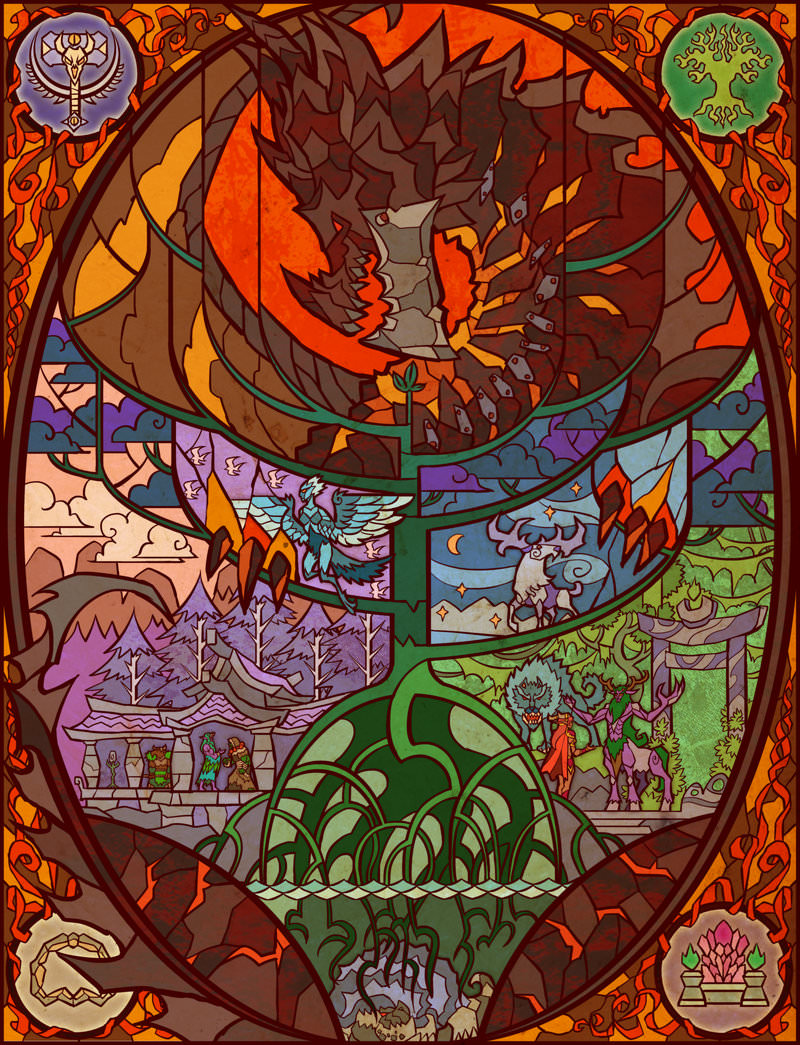
Campaign Compendium
A player guide
Introduction . . . . . . . . . . . . . . . . . . . . . . . 3
Character Creation . . .4
Class, Race, Background & Origin . . . . .5
Progressive Ability Scores . . . . . . . . . . . .6
Combat . . . . . . . . . . . . . 7
On Death's Door . . . . . . . . . . . . . . . . . . . .8
Massive Damage & System Shock . . . . . .9
Inspiration . . . . . . . . . . 10
Fate Tokens . . . . . . . . . . . . . . . . . . . . . . . . .11
Rules Reference . . . . . . 12
Variant Rules from the PHB & DMG . . . 13
This compendium is a work in progress. If you have any interesting material that could suit this project, feel free to notify me.
All copyrights reserved for WotC and various artists.
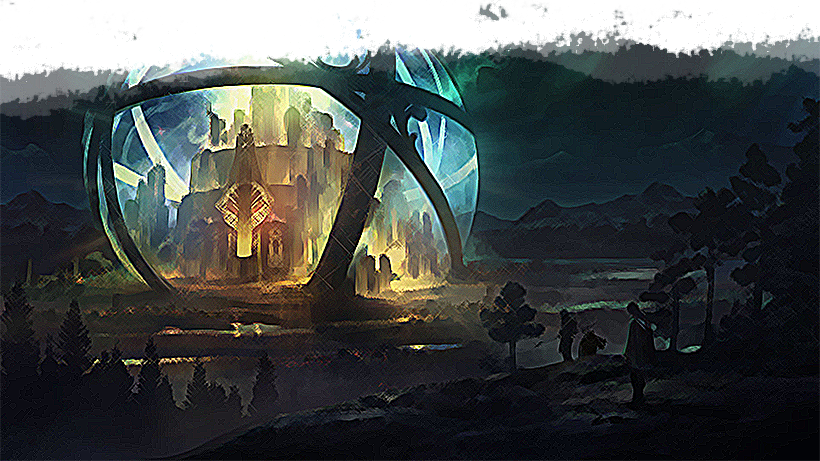
At the End of the World
Welcome to the dark and gritty atmosphere in the harsh north. You have shown resilience and cunning to make it this far, but your journey is far from over. Queen Kiara's hymn echoes in your mind:
"The past and the present now enemies are.
No way of telling for how long or how far.
The present is fighting for the truth.
The past yet grasping the youth.
One force the other will overcome.
Or will they crash simply one by one.
The universe is shifting for the new era is here.
The past we can forget, embrace the new year.
Or is it something we all should fear?
Do not feel scared to shed a tear."
What Happened?
You have survived the first couple of centuries that followed Ragnarök, the Doom of the Gods. The seers had been right all along, the Gods could not (or would not) help you. Many have fallen in the wake of the New Dawn's blight that corrupts everything or anyone it reaches.
Who Are You?
Up until now you have been; a carpenter, a fisherman, a skald, a farmer or any other ordinary humanoid, but recently you have been requested to attend a feast at Jarl Hakk Thorvalds's table. Perhaps your actions haven't gone unnoticed.
What will you do?
You will have to forge your own destiny, there is no telling where your path in life may lead you. Just remember - all actions have consequences.
GM's Notes
This is a campaign that is quite dark and gritty but it isn't a horror story. As players you can expect to start off weak and worn and only through hard work and dedication may you rise above. In short, hit points is a valuable commodity and you shouldn't expect to be able to win every fight by rushing in head first.
The level of fantasy and technology varies greatly between various areas - as does the difficulty. However, there are also plenty of weird and wonderous boons and rewards to find in this mysterious plane of existence.
Character's may die or suffer other horrible afflictions which may or may not be irrevocable but the campaign isn't designed to be a meat-grinder. Death and other horrible consequences may be the results of characters picking a fight above their capability, ignoring warning signs or walking blindly into a hostile atmosphere.
Furthermore, this campaign features a high level of home-brew and openness in terms of role playing D&D. If your first reaction to reading this is to worry then it's probably not for you.
Continued Reading
As a player, all you really need to read to get started is character creation. In the following pages of this compendium you will find various rules and alteration of rules that has been adopted for this campaign as well as a guide to character creation. Thereby, this compendium offers you an insight into my philosophy as a GM as well as a illustration of how the campaign plays at the table.
PART I
Character Creation
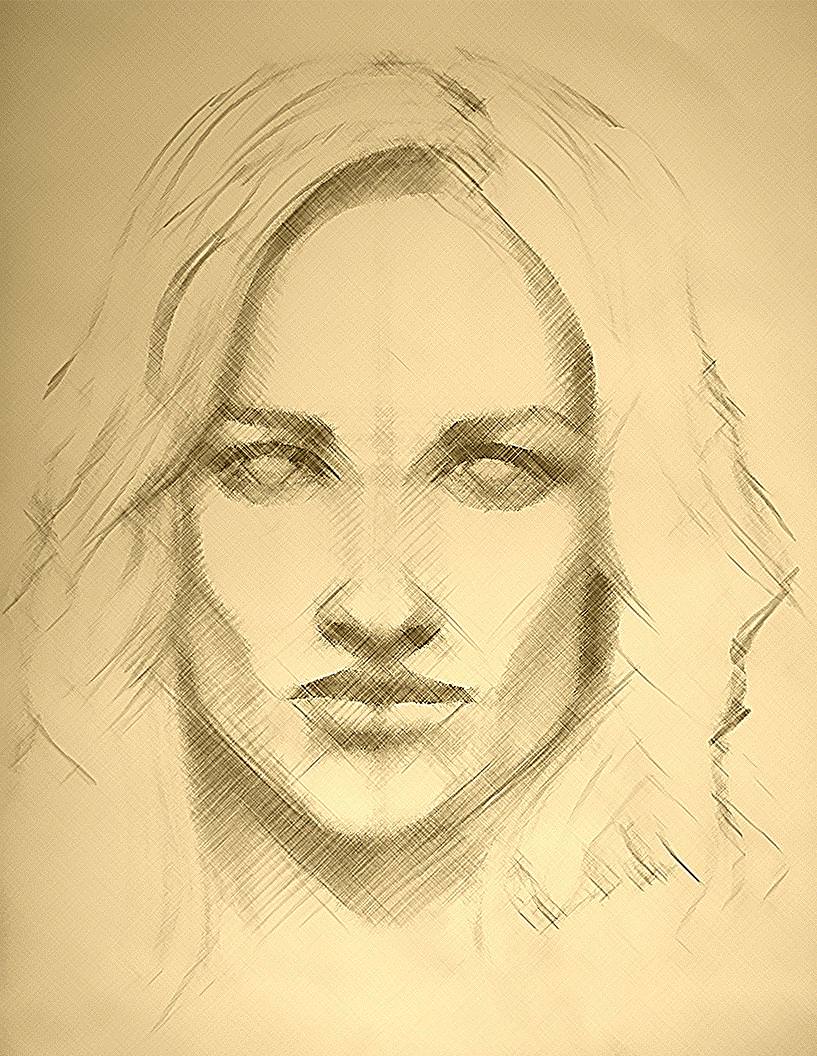
Be Who You Want To Be
C reate a character that is tailored to your tastes. If you wish, you are offered the ability to let your wildest imagination come true in this campaign setting.
Class
You may pick any official WotC class and subclass. As a GM, however, I am open to makings some minor changes to official classes and subclasses to better suit your image of a character. I am also ok with homewbrew but you always need to discuss anything outside of official D&D with me before I can approve it. Some subclasses and classes are also a bit sub-par. If you want to play anything like that we can work together to make it on par with other combinations.
Race
Since we're going for a Dark-Fantasy Viking theme all races might not be doable. That said, you can choose any offical 5e race for mechanical purposes and we can simply change its flavor and looks to something more fitting. Additionally, I find that racial boons can play a bigger roll than it should during character creation so I'm open to minor changes in all races, especially the rarer and weaker ones.
- All races ASI is converted into ability point for a special point buy, 2 points per ability score increase. You may ask me for minor boons if you play a combination that is not min-maxxed.
Background (Profession)
Your background will play a big role in your part in society and is better regarded as your profession than your background. Ability checks connected to your background will be easer to pull off and you will be considered to be somewhat of an expert in your profession.
- Pick any official background.
- Ask me if you want something not included in the official WotC material.
Origin
Everyone has roots and so do you. Maybe you're a descendant of a great warrior or maybe a mystical power has gotten you this far. Only you truly know the depth of your origin.
The Three Families
Few people who live stand alone, most commonly your character was probably summoned because of your birthright as a member of one of the three ruling families; Thorwalds, Stenbergs or Blomgrens. Currently the families are in an alliance that they call The Asgard Fededartion. The alliance has held for over two decades with Hakk as their Jarl. Recently, however, famine and political disagreement has led the federation to the verge of collapse.
The Thorwald's story begins centuries ago when Thor blessed their ancestral father with the ability to control the storm over the seas. Now they rule over a small island and are best known for their fast ships and raiders.
The Stenbergs share ties to mountain dwarves and are stubborn as an ox. Most renown for their impressive fortress which has deflected countless assaults. Fables emphasize the impenetrable Stenberg fortress as a beacon of stability and hope.
The Blomgren family is a collective of humans, elves, giants and halflings who dedicate themselves to protecting the last remaining farmlands under Jarl Hakk's possession.
Heroes & Villains
Maybe you are not a local, maybe you're the descendant of a great war hero who have traveled here to join earl Hakk for a personal motive. Be warned! Families who fought in the first blight are often seen as either heroes or villains. Some people praise them and say that they were a blessing from the gods while others say that they were the cause of it.
The Sarorinsen family dates back to a couple of centuries ago when the dedicated scholar and sorcerer Hefrig had his offspring. The countless tales of the curious Hefrig tell thousand stories, few know how to discern what was true or myth. Currently they reside in The Whispering Forest to the east.
The Timberhearts are descendants of the brave warrior, paladin and father Eric Timberheart and elven mother Elenor. Legends say that he may have been a manifestation of Tyr himself. Now they drift around as nomadic warriors of Tyr who people seldom challenge in battle. Behind their back, however, people spread rumors about how the Timberheart's cannot be trusted.
The Sigmarrsons share ties with the mysterious halfling Sigmarr who fought in the first blight and founded the Four Races Trading Company (FRTC). Now they sail the seas, live in villages and travel the world in search for trade.
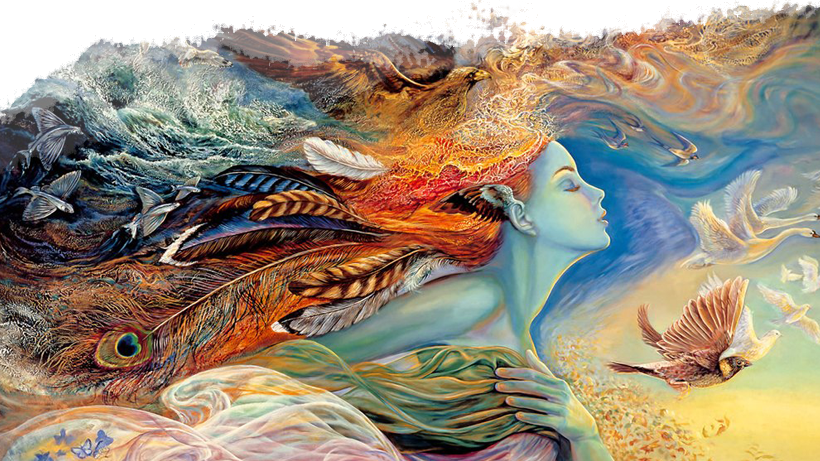
Progressive Ability Scores
These rules offer a deeper alternative to the custom ability score as described on p. 13 in the PHB. In this build characters start off weaker to put more emphasis progress. This emulates a steadier growth of ability scores like in games such as Skyrim or Dark Souls.
30 points to spend
This variant to the point buy system is better suited for campaigns where you want to experience the whole journey from being a weak novice to rising up as a hero. You have 30 points to spend, excluding racial bonuses.
Racial ASI, Feats and ASI from class
This system is built for steady progression which means that you will receive points to spend every level. This change also brings with it a couple of minor changes to ASI.
- You still get your race's bonus ASI but you convert these bonuses to 2 points per ASI before your 30 points.
- All other ASI such as the one classes receive at 4th level is changed or the minor ones you get from some feats have been removed. Instead you may choose a milestone feat.
Milestone Feat
Instead of ASI from your class progression you get to craft a milestone feat that reflects your character's progression through the story. You can use regular feats as a framework for this but a milestone feat should be more powerful and flavorful than a normal feat. There is no rigid framework for the limit to the feat. Instead, consider it as an epic boon that reflects your character's unique qualities.
Base Ability Scores & Progressive Cost
All ability scores start off at 6, which equals a modifier of negative two. The higher the attribute score, the costlier it is to progress even further.
| Level | Points rewarded |
|---|---|
| 1 | 30 |
| Race | 6 |
| 2-20 | 5 |
Ability Score Progressive Cost
| Ability score | Cost per attribute |
|---|---|
| 7-10 | 1 |
| 11-14 | 2 |
| 15-17 | 3 |
| 18-20 | 4 |
Ability Score Total Point Cost
| Score | Cost |
|---|---|
| 7 | 1 |
| 8 | 2 |
| 9 | 3 |
| 10 | 4 |
| 11 | 6 |
| 12 | 8 |
| 13 | 10 |
| Score | Cost |
|---|---|
| 14 | 12 |
| 15 | 15 |
| 16 | 18 |
| 17 | 21 |
| 18 | 25 |
| 19 | 29 |
| 20 | 33 |
Example Level 1
| Attribute | Base | Chosen | Cost |
|---|---|---|---|
| Strength | 6 | 12 | 8 |
| Dexterity | 6 | 8 | 2 |
| Constitution | 6 | 16 | 18 |
| Intelligence | 6 | 6 | 2 |
| Wisdom | 6 | 10 | 4 |
| Charisma | 6 | 8 | 2 |
| Total: | 36 |
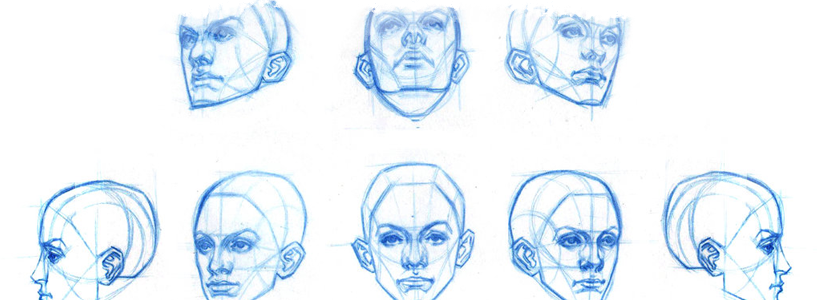
PART II
Combat
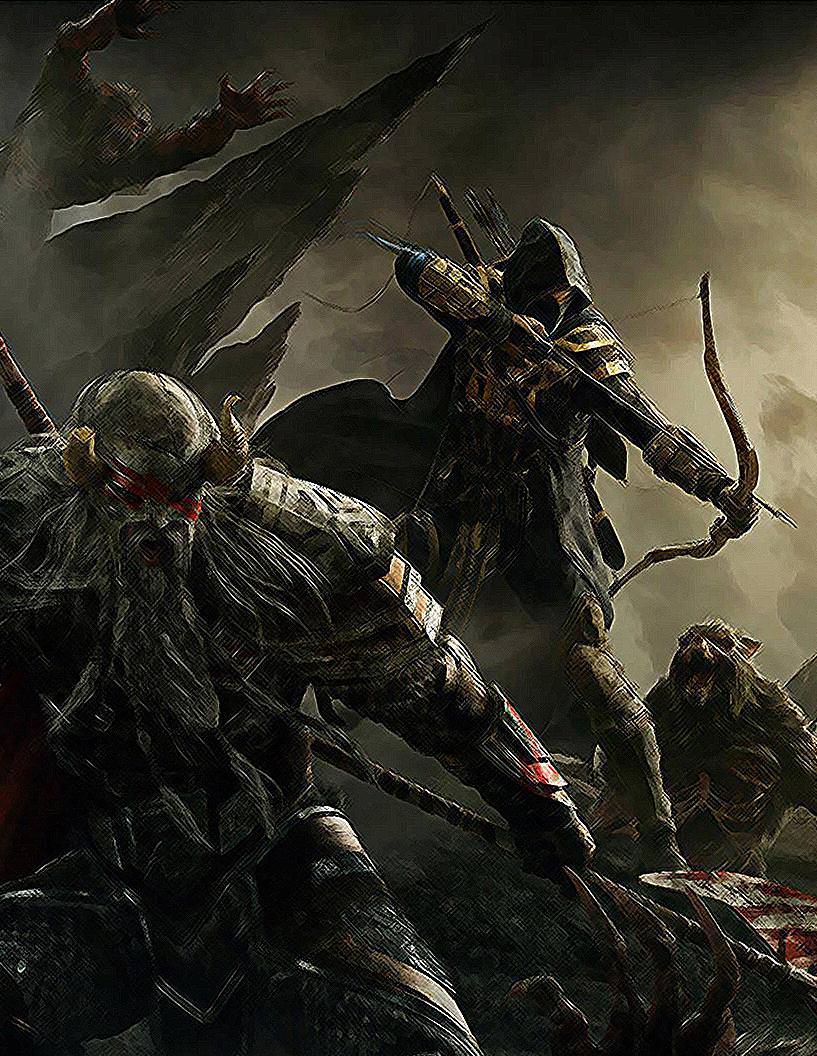
On Death's Door
This alternative rule replaces the unconscious condition which is triggered from dropping to 0 hit points. Instead, characters make one last stand and gains the condition On Death's Door. This variant rule allows players to continue controlling their characters while at 0 hit points but they run a great risk doing so, and they still roll for death saving throws!
The standard rules as described on page 197-198 in the PHB still apply unless stated otherwise.
Dropping to 0 Hit Points
If a you drop to 0 hit points and isn't killed outright, you enter the On Death's Door condition.
Instant death
Unchanged, use the standard rules as descibed in the PHB.
Falling Unconscious
This rule has been removed, instead players who drop to 0 hit points gain the On Death's Door condition.
Condition: On Death's Door
- Being at 0 hit points doesn't cause you to fall unconscious.
- You cannot maintain concentration.
- The condition ends if the you gain at least one hit point.
- You gain three temporary levels of exhaustion while the condition persists.
- Death saving throws are not affected by the disadvantage imposed from exhaustion.
Fight. At the cost of a death saving throw you may attempt an ability check, use an item, take the attack action, casts a spell , use a bonus action, reaction or any other action not listed under Flight.
Flight. A creature affected by this condition is able to move and take the dash, disengage and dodge actions without having to make a death saving throw.
Exhaustion
| Level | Effect |
|---|---|
| 1 | Disadvantage on ability checks |
| 2 | Speed halved |
| 3 | Disadvantage on attack rolls and saving throws |
| 4 | Hit point maximum halved |
| 5 | Speed reduced to 0 |
| 6 | Death |
Death Saving Throws
Unchanged, use the standard rules as descibed in the PHB.
Stabilizing a Creature
The best way to save a creature with 0 hit points is to heal it. If healing is unavailable, the creature can at least be stabilized so that it isn't killed by a failed death saving throw.
You can use your action to administer first aid to a creature on death's door and attempt to stabilize it, which requires a successful DC 15 Wisdom (Medicine) check.
A stable creature gains 1 hit point.
Hard Core
Player Characters gain one level of exhaustion once they recover from the on death's door condition (but they lose the three temporary levels imposed by the condition). This means that a character will die instantly if they already have three levels of exhaustion when they are reduced to 0 hit points.
The levels of exhaustion represent a character being mortally wounded while being brought back from 0 hit points. The design of this mechanic is aimed to make death feel more real than playing a game o 0 hp whack-a-mole.
Under certain conditions a GM might allow for players to recover two levels of exhaustion from a long rest instead of one if they succeed on a DC15 Constitution saving throw.
Monsters and Death
Most DMs have a monster die the instant it drops to 0 hit points, rather than having it gain the On Death's Door condition and make death saving throws.
Mighty villains and special nonplayer characters are common exceptions; the DM might have them follow the same rules as player characters.
Knocking a Creature Out
When a melee attack would normally cause a monster to die you may instead choose to knock them unconscious for 1d4 hours.
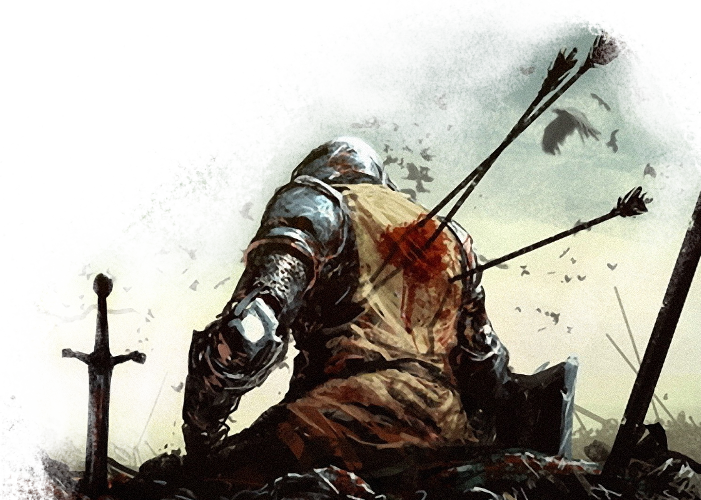
Massive damage & System Shock
A bite from a dragon or a ten foot long ballista bolt might occasionally cause a character to lose more than half of their hit points in one turn. If you want to make big bad monsters even scarier, then say no more! These alternative rules build off the Massive Damage ruleset from the DMG p. 273.
Massive Damage
This optional rule makes it easier for a creature to be felled by massive damage.
When a creature takes damage equal to or greater than half its hit point maximum during one turn without being reduced to 0 hit points must attempt a DC 15 Constitution saving throw. A creature that fails suffer a random effect determined by a roll on the System Shock table.
For example, a creature that has a hit point maximum of 30 must make that Constitution save if it takes 15 damage or more in one turn.
System Shock Table
| d4 | Effect |
|---|---|
| 1 | Frightened |
| 2 | Blinded |
| 3 | Deafened |
| 4 | Prone |
The Natural 20: Battle Frenzy
Succesfully escaping system shock table by rolling a natural 20 on the Con Save triggers a state of Battle Frenzy:
No Pain No Gain – The pain triggered a rush of adrenaline which fills your veins with ferocity, you gain temporary hit points equal to twice your level plus your constitution modifier (minimum 1). The temporary hit points gained this way lasts up to 1 hour.
Natural 1: Staggering Blow.
A critical failure on the constitution save makes the character unable to take bonus actions or reactions until the effect ends in addition to the system shock table effect.
Duration
Most GM's want to rule that the system shock condition ends after the players next turn. If a GM wants to enforce an even harsher variant he or she may instead have the players repeat the DC 15 Constitution save at the end of their turn until they succeed or an ally helps them.
Help. A player may help another character to recover early. As an action they may administer remedy by attempting a DC 15 Medicine (Wis) ability to end the condition.
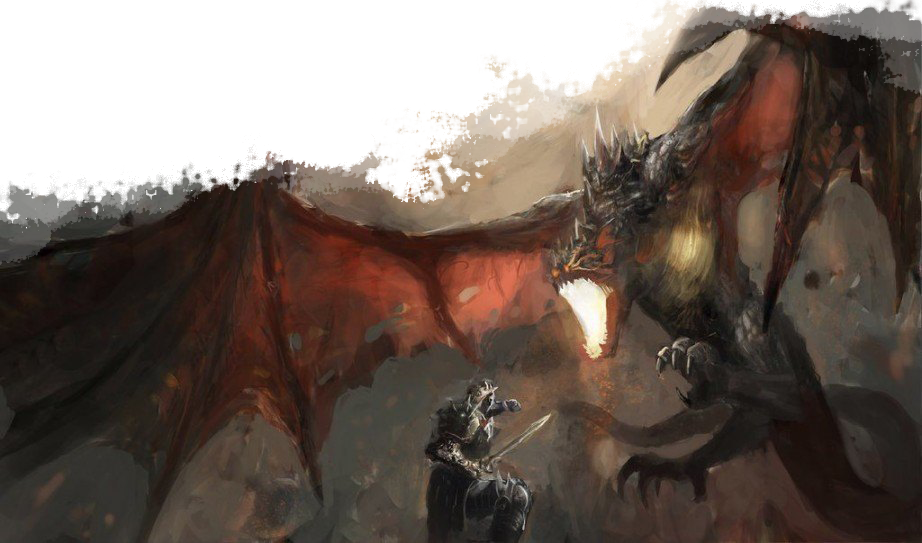
PART III
Inspiration
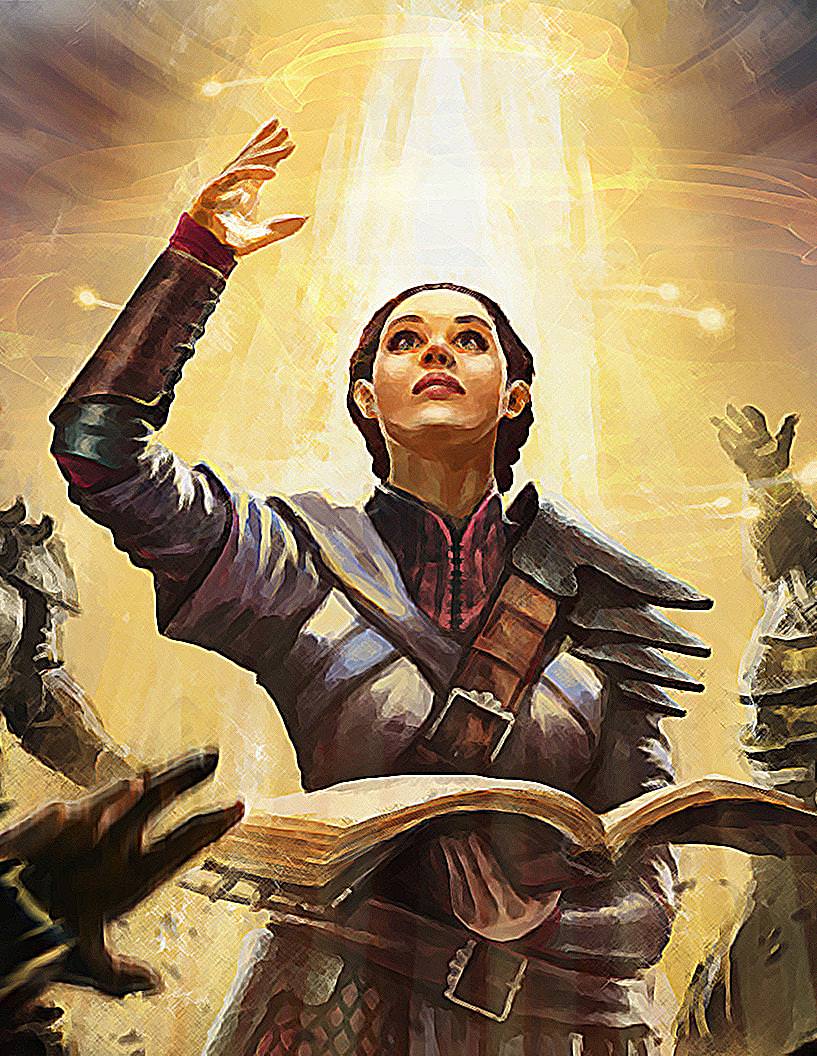
Fate Tokens
Fate can be a cruel mistress in a d20 oriented world. The system we all know and love is based on chance, and that's part of it's charm! Sometimes, however, a clutch moment might deserve a slightly bigger chance of success than another. This system gives the players a chance to alter fate in their favor by using Fate tokens.
Getting Started
These rules replace the standard rules for inspiration with a token system. Once players finish a long rest the may take a number of tokens from the based on their proficiency bonus.
All you need is a set of poker chips, if the colors are different feel free to change or remove tokens as needed.
Gaining Fate Tokens
A player may purchase tokens for a total value equal to their proficiency bonus following the table below, once they finish a long rest. Players may not save up tokens, once a long rest is finished the total value of tokens may not exceed their proficiency bonus.
Using Fate Tokens
Every fate token grants a unique ability which the players may consume at will as a free action.
A player has to declare that they consume the token before any relevant roll has been made. For example; a player cannot roll for a attack, notice that it missed the target and then retroactively consume a green mana token to gain advantage.
When a token is consumed a rush of energy flows through the character's veins, emitting a feint glow of the tokens color around the character.
The Long Rest
The Fate Token rules work in addition to the standard rules for resting.
Long Rest: Fate tokens are replenished. To receive this bonus you may must finish the rest without any major incidents or ailments.
Using this in your Campaign
The fate token mechanic does two things, it rewards long rests and it gives players a unique chance to influence their character more. A long rest isn't always possible, it should be a nice relief after a long and weary journey.
These rules are best aimed for a despair themed or gritty campaign where being out on the road is truly dangerous and resources are scarce.
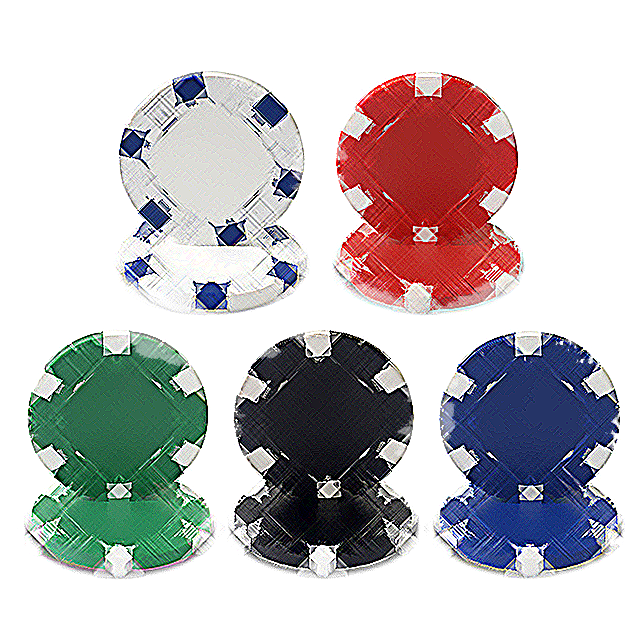
Fate Token Table
| Token | Cost | Ability |
|---|---|---|
| Ruby (Power) | 2 | After you roll for damage or healing, you may spend this token to gain the possibility treat any damage or healing die as their maximum until the end of your next turn. You may use this feature on a maximum number of die equal to your proficiency modifier per token used. |
| Sapphire (Awareness) | 2 | Before you roll for a saving throw you may spend this token to gain advantage on the roll. |
| Emerald (Focus) | 1 | Before you roll for any attack roll using a d20, you may spend this token to gain advantage on the roll. |
| Diamond (Skill) | 1 | Before you roll for any skill check you may spend this token to gain advantage on the roll. |
| Obsidian (Fate) | 1 | You as a player may attempt to bend reality, you may spend this token as a Plot Point (DMG 269) A player may never have more than one of these at the time. The result of the effect varies greatly, the risk increases with the reward. |
PART IV
Rules Reference
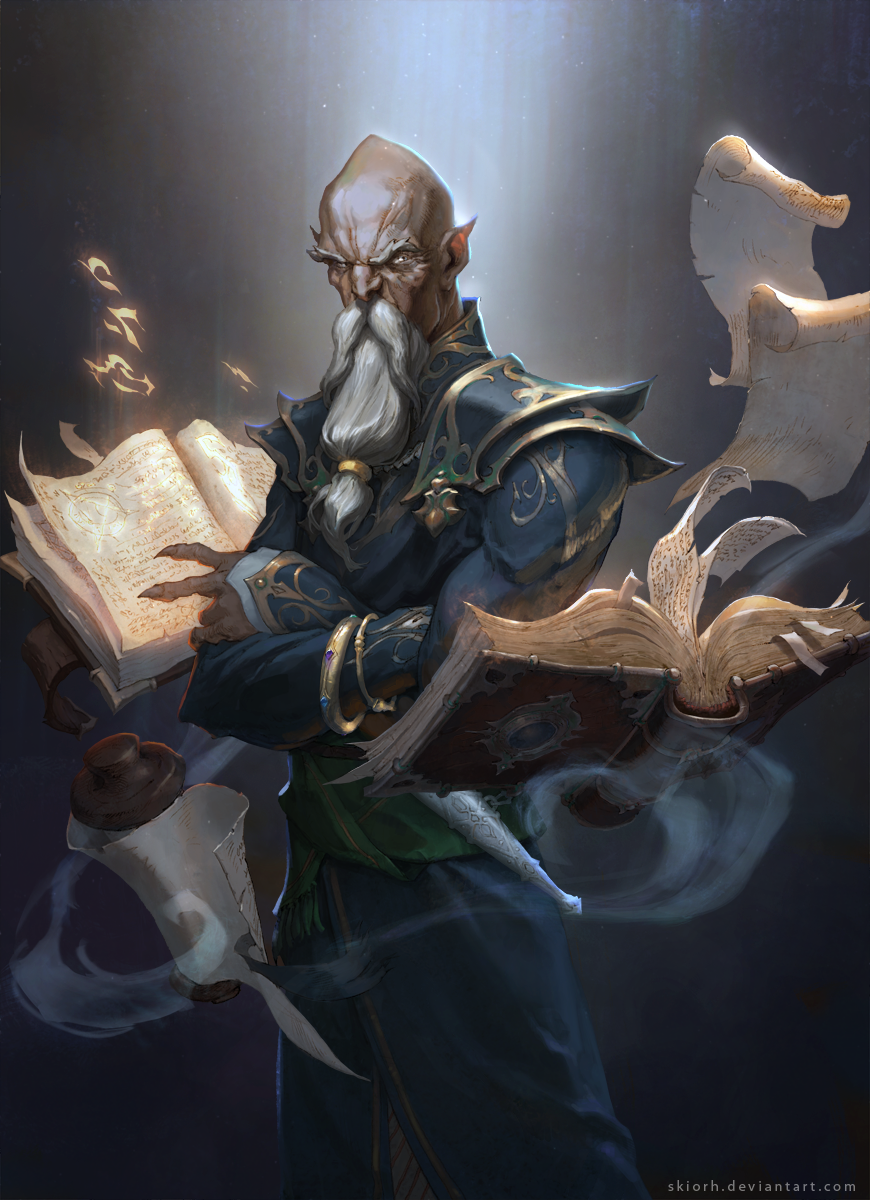
Variant Rules from the PHB & DMG
These optional rules are adopted for this campaign with little to no alteration as presented in the PHB & DMG. Listed in order of page number and book, starting with the PHB.
Equipment Sizes (PHB 145)
A common sense optional rule that basically says that armor and clothing that fits one character won’t necessarily fit someone else. Yes, I can’t believe this is a variant rule rather than a default assumption, but there you go. What this means in practice is that if you kill a 7’5″ bugbear and steal his full plate armor, you're going to need to employ a smith to do some considerable work resizing it for your dwarven paladin.
Multiclassing (PHB 163)
Multi classing is allowed but the GM has a final say if a specific combination is especially difficult to pull off. In such cases a quest of a specific requirement must be met before multi-classing.
Feats (PHB 165)
Feats are fun and flavorful. Players may take any feat from the list instead of ASI with some exceptions.
Alteration: Lucky & Elven Accuracy feats are banned. Feats that gives a player a bonus to an ability score no longer does that, talk to your GM about compensation if you still want them. Talk to your GM if you want a specific feat that isn't covered by the list.
Opportunity Attacks (PHB 165)
RAW any creature may take an AoO once a creature leaves it reach without taking the disengage action or is under a similar effect which denies AoO. These rules are simple enough to pickup and use but after some years with them I find them lacking. The one problem I have with this system is that a creature can run in circles around another creature without provoking attacks which doesn't make any sense to me. Therefore, I also allow creatures to take an attack of opportunity if a creature moves around in your space or if it attempts to stand up.
Alteration: If a creature of medium size or smaller moves 5 ft. or more around you (while adjacent to you) it triggers an Attack of Opportunity. If a large or larger sized creature does this it only triggers an AoO if it moves 10 ft. or more directly adjacent to you.
Additionally, if a creature stands up from being prone, you may take an Attack of Opportunity (This happens after the prone condition ends).
The standard rules still apply in addition to these rules, this just expands the criteria for allowing an attack of opportunity.
Advantage and Disadvantage (PHB 173)
RAW you either have it or you don't, there is no progressiveness in this rule. Personally I like depth and I also find it strange that for instance double advantage is canceled by a single disadvantage. I don't like this static rule too much so I'm inclined to alter it somewhat to allow more depth.
Alteration: Advantage and Disadvantage only cancel each other out on a 1-1 basis. To determine the final outcome consider each instance of advantage as (+1) and each instance of Disadvantage as (-1). Two instances of Advantage, therefore, isn't canceled out by one instance of disadvantage, instead 2-1=1 (advantage).
Additionally, you may go beyond advantage if you have multiple effects that grants you advantage. This doesn't cause you to roll more dice, however, instead you add (+1) to the result for each instance of advantage after the first. The same is true for disadvantage except you would add (-1) to the roll instead for each instance of disadvantage beyond the first.
Resting (PHB 186)
Alteration: Because this is a rule-set aimed for a rough setting the total number of rests a character can gain benefits from is limited to a total of three rests per 24 hours. Typically, this means one long rest and two short rests but in some cases it might mean three short rests. As in the RAW, you still cannot benefit from more than one long rest per 24 hours.
Ability Checks PHB (174-179)
As a whole these rules are quite wide and very open for interpretation as to how exactly they would work in any given Campaign. I like the openness of these rules but I have found a couple of things that I wish to adjust over the years.
Alteration: You may only assist someone with an ability check if both of you are proficient in a specific skill.
Additionally, players have:
Instinct. After you see the result of an ability check that you are proficient in you may choose to use your passive score instead. This is called using your instinct and you may do so a maximum number of times equal to your proficiency bonus per long rest. This feature does not work if the initial result was a natural 1.
Casting a Spell (PHB 202)
All official spells are ok except for a few exceptions:
- Spells that create food only dampens hunger for a while and slows down effects from starvation, it doesn't provide any noteworthy nutrition.
- The spells green flame blade and healing spirit are banned.
Training to Gain Levels (DMG 131)
As an optional downtime rule, the DM can insist that characters spend time and gold in order to go from one experience level to another. On the whole, I don't care too much about whatever arbitrary reason a character suddenly receive a boon but for this campaign I want to enforce downtime activity to gain levels.
Additionally, if a character decides to multi-class into an area that he has no previous experience – a fighter chooses to become a warlock, for example – then I’d find it very hard to wave my hand and say that it’s something that simply happens on the fly. I think I’d view it as a role-playing opportunity – the fighter needs to gain an eldritch patron to power his new warlock abilities.
Alteration: The story of the campaign trumps the mechanics. If a level gain can easily be explained away within the campaign narrative, then that’s fine and dandy and will be handled with a couple of weeks downtime. If it can’t, then we need to pause and assess how a character received these new abilities.
How did Quentin the Surprising Erudite (barbarian level 8) pick up a level of wizard during a spelunking expedition on the Rock of Bral? There’s a story there, and it’s always fun to tell stories.
More Difficult Magic Item Identification (DMG 136)
Under the normal rules you can identify any magic item by handling it and experimenting with it over the course of a short rest. By the end of the short rest, you know all these is to know about the item. I think that’s a bit dull. Magic items are, after all, supposed to be unique items of power in 5th edition.
Therefore you'll need to cast the Identify spell, or embark on some serious empirical research, to learn all there is to learn about a magic item. Some may give up their secrets easily, others may not.
Mixing Potions (DMG 140)
These rules are fun and chaotic so I intend to use them. Quaff a second potion while still under the effect of a first, or mix potions together and consume the results . . . and something unexpected may happen. Maybe one of the potions will become permanent, maybe you'll poison yourself, maybe you'll explode! The dice will decide.
While I intend to use the concept - the option that makes potions permanent will only be used in very specific situations.
Scroll Mishaps (DMG 140)
Under this variant rule, if you have to make a roll to use a scroll (probably because the spell on it is too high a level for you) and you fail that roll then you have more to worry about that the spell not going off. You need to make a saving throw or a mishap occurs – this mishap might be annoying, debilitating or deadly. It’s a random die roll.
Vision and Light
Minor changes to Gaze effects as I found them to be a bit too vaguely explained RAW. Gaze:
- A creature that isn’t surprised can avert its eyes to avoid the saving throw at the start of its turn. If it does so, the creature is effectively blinded until the start of its next turn (and therefore immune to gaze effects as long as it’s averting its eyes). While you’re outside of the gaze’s range, you can attack other creatures than the target you are averting your eyes from without being “blinded”.
- When a creature that can see the Gaze starts its turn within the gaze range, the Gazer can force it to make a saving throw if the creature isn’t incapacitated and can see the creature.
- During its turn, a creature with a Gaze effect can force any creatures within range of it that can see it to make a saving throw, suffering the effect from the gaze on a failed saving throw.
Conditions (PHB 289)
Minor additions to some conditions.
Blinded.
- A blinded creature has disadvantage on saving throws that rely on sight.
- Spells without attack rolls that require somatic components have a 1/6 risk of failure (no spell slot expended).
Deafened.
- A deafened creature has disadvantage on saving throws that rely on hearing.
- Spells that require verbal components have a 1/6 risk of failure (no spell slot expended).
- Attack rolls against a deafened creature gain +2 unless the creature is accustomed to being deaf.
Exhaustion.
- Three levels of exhaustion also causes spells that require verbal or somatic components have a 1/6 risk of failure (no spell slot expended).
Frightened.
- Spells without attack rolls that require verbal or somatic components have a 1/6 risk of failure (no spell slot expended) while the source of its fear is within line of sight.
Poisoned.
- Spells without attack rolls that require verbal or somatic components have a 1/6 risk of failure (no spell slot expended).
Restrained.
- Spells without attack rolls that require somatic components have a 1/6 risk of failure (no spell slot expended).
Planar Effects (DMG 50-66)
The Dungeon Master’s Guide introduces a number optional effects to bedevil player characters when they visit other planes of existence. These are (take a deep breath): Feywild Magic, Shadowfell Despair, Psychic Dissonance, Blessed Beneficence, Pervasive Goodwill, Overwhelming Joy, Hunter’s Paradise, Beast Transformation, Immortal Wrath, Power of the Mind, Mad Winds, Abyssal Corruption, Prison Plane, Vile Transformation, Cruel Hindrance, Pervasive Evil, Blood Lust, Law of Averages, Imposing Order, and Planar Vitality.
So if the player characters happen to go on a jaunt to the Outer Planes, these are the rules I’ll be referring to in the first instance. Of course, some planes may not be covered by the DMG examples and some planar effect may be altered to better suit a specific campaign.
Spell Scrolls (DMG 200)
Where is the fun in not being able to cast spell scrolls outside of your class? Doing so always comes at the risk of a mishap anyway so personally I'm inclined to say - go nuts! Let there be scrolls!
Alteration: Anyone may attempt to use a Spell Scroll. To cast a spell scrolls you may use your spellcasting ability modifier or Arcana (Int). A character who doesn't have spell casting attempts the ability check at disadvantage.
If you know the spell you can cast it without an ability check. If you have spellcasting but do not know the spell, follow the rules depicted in the Spell Scroll Table.
Flanking (DMG 251)
I have always been a sucker for tactical and strategic options. Flanking as the variant rule describes it grants both players who are flanking a creature advantage on their attack rolls. Advantage on average is equivalent to a +5 bonus on the d20. Personally, I have always felt like this is too big of a boon for ganging up on someone, and would probably do more harm to the players than good when they are up against a horde of small creatures. On a quest to find a sweet spot for strategic flanking I have adopted this rule with a slight alteration.
Alteration:
- Two or more creatures can flank a creature of the same size. If the flanked creature is of a larger size than the flankers than the amount of creatures needed to flank increases by one.
- Each creature beyond the first one adds +1 to hit modifier to attack rolls against the flanked creature.
Fear and Horror (DMG 266)
In certain situations your character may see things so vile, or be so overwhelmed by the futility of their predicament that the rules for Fear or Horror come into play. If circumstances call for it (perhaps you're faced with overwhelming odds, or a foe you know you can’t beat) then the DM could call for Wisdom saving throw: fail it and you gain the Frightened condition. Horror calls for a Charisma saving throw. Fail that and you could gain a Madness (q.v.).
I like the rules for Fear and Horror. They are not intrusive, and only need to be wheeled out in specific circumstances. DMs running Ravenloft would certainly use them more, but I see a place for them in most D&D campaigns.
Healer’s Kit Dependency (DMG 266)
A character cannot expend hit dice to recover hit points at the end of a short rest until someone expends the use of a healer’s kit. This represents bandaging the wound and applying alchemical salves to the damage. Only one use of the kit is expended regardless of how many hit dice the character chooses to spend. I like this variant. It explains how hit dice work in the context of the game world. There’s a degree of verisimilitude that the normal rules lack. And it gives the healer’s kit a beefier role in the game. I like that too.
If a character runs out of hit dice to spend then a healer’s kit can be of no more use to him. This also makes sense to me, because presumably you can only benefit from so much medical attention. Yes, I like this variant a lot. It will take much to persuade me not to use it.
To be clear, I should point out that this variant doesn't affect the Fighter’s ‘second wind’ ability in any way. That works as printed and doesn't require the use of a healer’s kit. Magical healing from spells and potions also works without using a healer’s kit.
Alteration. There’s just one problem I have with this variant, and it is that under these rules no one can heal naturally without a healer’s kit. That seems a bit harsh, so I'm going to modify the variant slightly.
If a character attempts to heal without using a healer's kit they may still do so but the result is limited and usually worse than with a kit. Character's may spend one hit die to restore hit points without the healer's kit but doing so downgrades the size of the die one step.
For example: Boblawlaw the barbarian wants to spend one hit die without a healer's kit. He rolls a d10 instead of a d12 but is still able to restore some hit points.
Slow Natural Healing (DMG 267)
The general rules allow PCs to regain all of their hit points at the end of a long rest. Regardless of how wounded they are, eight hours of sleep or playing tiddly-winks is all it takes to knit all wounds and be as good as ever they were. There are types of campaign where this Wolverine-level healing factor is a necessity, but my campaign isn't going to be one of those.
As a DM I would like (on occasion) to put the PCs in a situation where hit points become a valuable commodity. PCs who are wounded and can’t heal just by sitting around become desperate and creative. It’s not something I would want to overdo, but it’s a cool narrative tool in the DM's arsenal that I don't wish to discard. Then we have the issue of verisimilitude. If the PCs are humans, and the PCs can heal all their wounds over night, does that mean that all humans are possessed of such miraculous powers? Why are there doctors, or healers or hedge witches? The world begins to break down. I can’t get my head around it.
So, in this variant PCs don't heal any hit points overnight at all. The only way they can heal themselves is by spending their hit dice during a short or a long rest. As in the standard rules, PCs have a maximum number of hit dice equal to their level and half their hit dice maximum is recovered after each long rest.
Plot Points (DMG 269)
These rules take the idea of co-operative storytelling to a new level. Up to once per session, each player can spend a plot point to offer up an event to be incorporated into the session that the other players and the DM must accept as true. This could literally be anything – such as the arrival of a long lost cousin, discovery of a secret door, acquiring a new mission from a patron. A game like this could be a lot of fun. But it needs to be a special sort of game, with the right group of players. It’s not for everyone.
Alteration. Only option 1 and 2 are adopted, the third one is too crazy for my tastes. When using option 1 or two, however, the result is not always positive! The GM determines a suitable DC for the roll and on a failure something equally bad happens instead.
Action Options (DMG 271-272)
Only the rules explicitly written in this section is adopted. A rule that is not presented in this section is therefore not adopted at all.
Climb onto a bigger creature. Are adopted with a slight clarification to what adjudicates a general climb onto roll. For normal circumstances the DC will vary on the creature which is the target. The DC will be a Athletics (Str) or Acrobatics (Dex) skill check.
Failing such an attempt triggers an Attack of Opportunity if the creature has a reaction to spend. The automatic critical strike remains, which is this features most interesting trait.
Disarm. Adopted as written.
Overrun. Adopted as written.
Shove Aside. Adopted as written.
Tumble. Adopted as written.
Cleave through creatures. Adopted with some alteration. Attempting such a "cleave" is tougher (and different) than a normal strike. As such, you may declare that you are attempting a cleave but doing so enforces disadvantage on your attack roll. However, if you hit, you deal full damage to all your targets. Additionally, piercing weapons may also pierce in a 10ft line using piercing weapons with the reach property such as a Pike (at disadvantage).
You may only cleave or "pierce" through creatures with two handed melee weapons.
Hitting Cover (DMG 272)
Cover is granted by any substantial object placed between you and your attacker. The bigger the cover, the larger the bonus you get to your armor class. Half cover gives you a +2 bonus, and three-quarters cover a +5 bonus. If you have total cover you cannot be targeted with an attack. Cover is one of the few elements in fifth edition that grants a specific numerical bonus rather than simply conferring advantage. If you are attacked when you have cover, there is a greater chance of the attack missing. This optional rule asks how did the attack miss.
Neville the swashbuckler is fighting an orc in mêlée combat. Feckless Dave the ranger is trying to shoot the same orc with his longbow. Neville and the orc are battling in such a way that Neville is providing half-cover to the orc. The orc is usually armor class 13, but thanks to Neville, it is actually armor class 15 against Dave's attack. Dave attacks and hits armor class 14 with his attack roll. He has missed the orc. But the roll would have been good enough to hit the orc had it not been for the cover, so the attack must have hit the cover instead. The DM now compares the Dave's attack roll with Neville's armor class. If the roll is good enough to hit Neville then he gets an arrow in the back. If it’s not good enough then it still struck Neville, but didn't do him any damage.
Rules for hitting allies when firing into mêlée are always fun. That said, you do not need to add your ability modifier to the damage of friendly fire.
Credits
Combat
Cover art copyright Zenimax from the elder scrolls online.
On Death's Door
Credits to cheatisnotdead on reddit for a truly amazing concept and brilliant execution.
Art Credit: Unknown. If you know the artist, please contact me!
Character Creation
Beautiful cover art by vladgheneli at DeviantArt.
Big Bad Vodoo
Vuk Kostic (aka Chevsy on DeviantArt) for absolutely stunning artwork.
Inspiration
Beautiful cover art by Isdira at DeviantArt.
Progressive Ability Scores
FUNKYMONKEY1945 at DeviantArt.
General Notes and Ideas
Iourn at The Walk Between Worlds.
Final Notes
All copyrights reserved for WotC and various artists.
If you have any interesting material that could suit this project, feel free to share it.
Contact: kyllebylle at reddit
Version 2.0
Printer friendly version of these rules:
Copy source code, paste into GM Binder document, and add the 'ink friendly' theme at the top of the document.